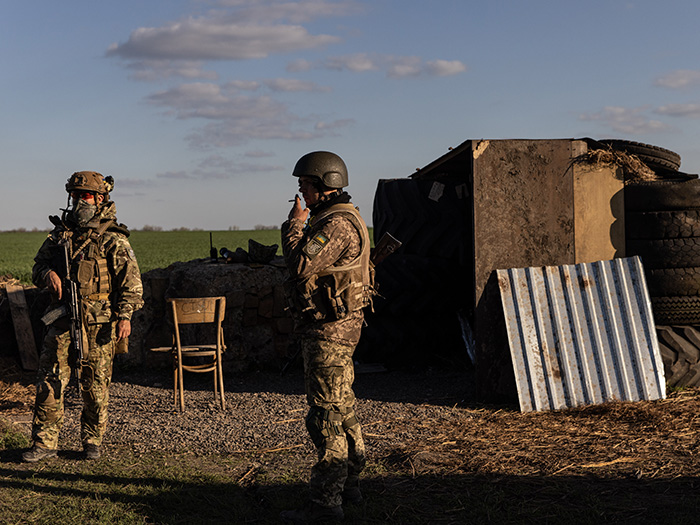As War Risk and Inflation Bedevil Leaders, 2021’s Business Resilience Standards Won’t Cut It Now

U.S. businesses face the perfect storm of heightened risk at a time when they feel less resilient to deal with it.
That’s according to Beazley’s 2022 Risk & Resilience Research survey, which found that business leaders believe this risk will peak in the summer.
Yet, on the flipside, the annual study, which was carried out in January before the war in Ukraine started, also revealed that just over one third (34%) of American companies say they are highly resilient to risk.
That compares with 20% of their UK counterparts. It’s also a figure that is 5% lower than it was in 2021.
At the time of the research, which focuses specifically on geopolitical, digital, business and environmental risk, only 25% of those surveyed felt they were operating in a high-risk environment. However, when asked to project six months ahead, over a third (38%) of U.S. leaders expect to be operating in a high-risk landscape by the middle of 2022.
“Business leaders continue to face perhaps the stiffest test in a generation as the world reels from the economic whirlwind unleashed by COVID-19 to the unfolding horror and ensuing geopolitical dislocation caused by the Russian invasion of Ukraine,” said Adrian Cox, CEO of Beazley.
“Business resilience is under real threat as companies adjust to a new world order in which everything, from trading relationships, through commodity prices to supply chains, needs to be re-evaluated from the ground up.
“As insurers we must step up and help businesses work through this perfect storm of a high-risk/low-resilience world.”
If it wasn’t before, geopolitical risk is now firmly on everyone’s radar, with war ranking as the No.1 risk for more than a fifth of leaders (22%) by this summer versus 15% last year.
Economic Uncertainty
Economic uncertainty, which dominated business agendas across the globe even before the invasion, has also risen six percentage points compared to a year earlier. Twenty-seven percent of respondents put it as their top risk in January 2022, rising to 28% six months later.
Inflation is another big concern. Well over half of participants globally (55%) said that they are very or moderately worried about their ability to mitigate it during 2022, however there are no comparative figures for 2021.
It’s a much larger problem in America, however, with the number rising to 65%; the highest of any country surveyed.
The other fast-growing risks in January 2022 included employer, intellectual property and energy transition risk, concern for which has all broadly doubled since last year. Supply chain and pandemic risk continue to be big issues, while environmental damage has become a recent problem too.
Lower Resilience
But perhaps most worryingly, as risk perceptions overall have heightened, perceived resilience has fallen back dramatically. Overall, only 27% of respondents reported feeling highly resilient about managing risk in January, compared to over a third of U.S. and UK leaders (35%) believing they had the required resilience when they were asked the same question last year.
Employer resilience has dropped because business leaders are facing the threat of a changed working environment brought about by the pandemic and newer threats such as vaccine mandates, as well as long-term mental health issues arising from the outbreak.
These are areas where businesses are vulnerable to legal action and have the potential for a rise in claims. In addition, there are serious concerns over disruption due to factors such as changing customer behavior or market shifts.
War and terror were the areas where businesses said in January that their resilience was low, but even then it was only perceived as low risk. If surveyed today, it would likely be considered a high risk, yet still with low resilience.
Despite this pervading perception of low resilience, overall firms feel they are more resistant to cyber risk. This is reflected in the fact that almost half of respondents said that their top priorities are investment in improved cybersecurity (43%), and risk management and loss prevention initiatives (42%).
Beazley commissioned research firm Opinion Matters in January to survey a sample of 500 business leaders and insurance buyers per country based in the UK, U.S., Canada and Singapore with international operations.
There were a minimum of 40 respondents per country per industry, including health care and life sciences; financial institutions and professional services; manufacturing; and energy and utilities.
Other sectors represented were retail, wholesale, food and beverage; public sector and education; real estate and construction; technology, media and telecommunications; hospitality, entertainment and leisure; and marine and warehousing.
Of the firms surveyed in the U.S. and the UK, there was an equal split of respondents across company sizes of: $250,000 to $1 million; $1 million to $10 million; $10 million to $100 million; $100 million to $1 billion; and more than $1 billion. &











